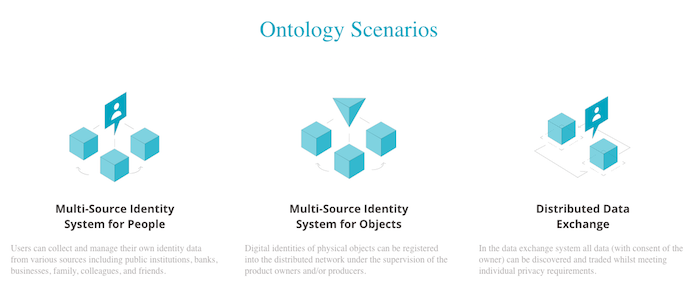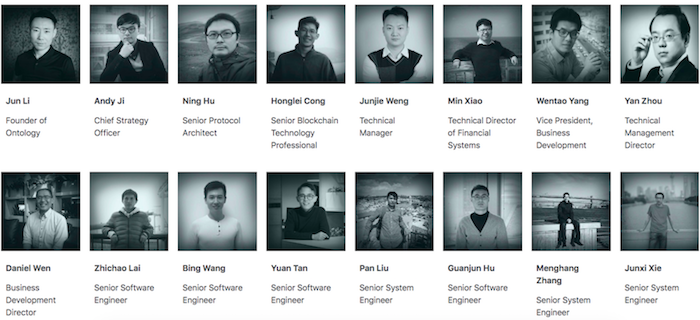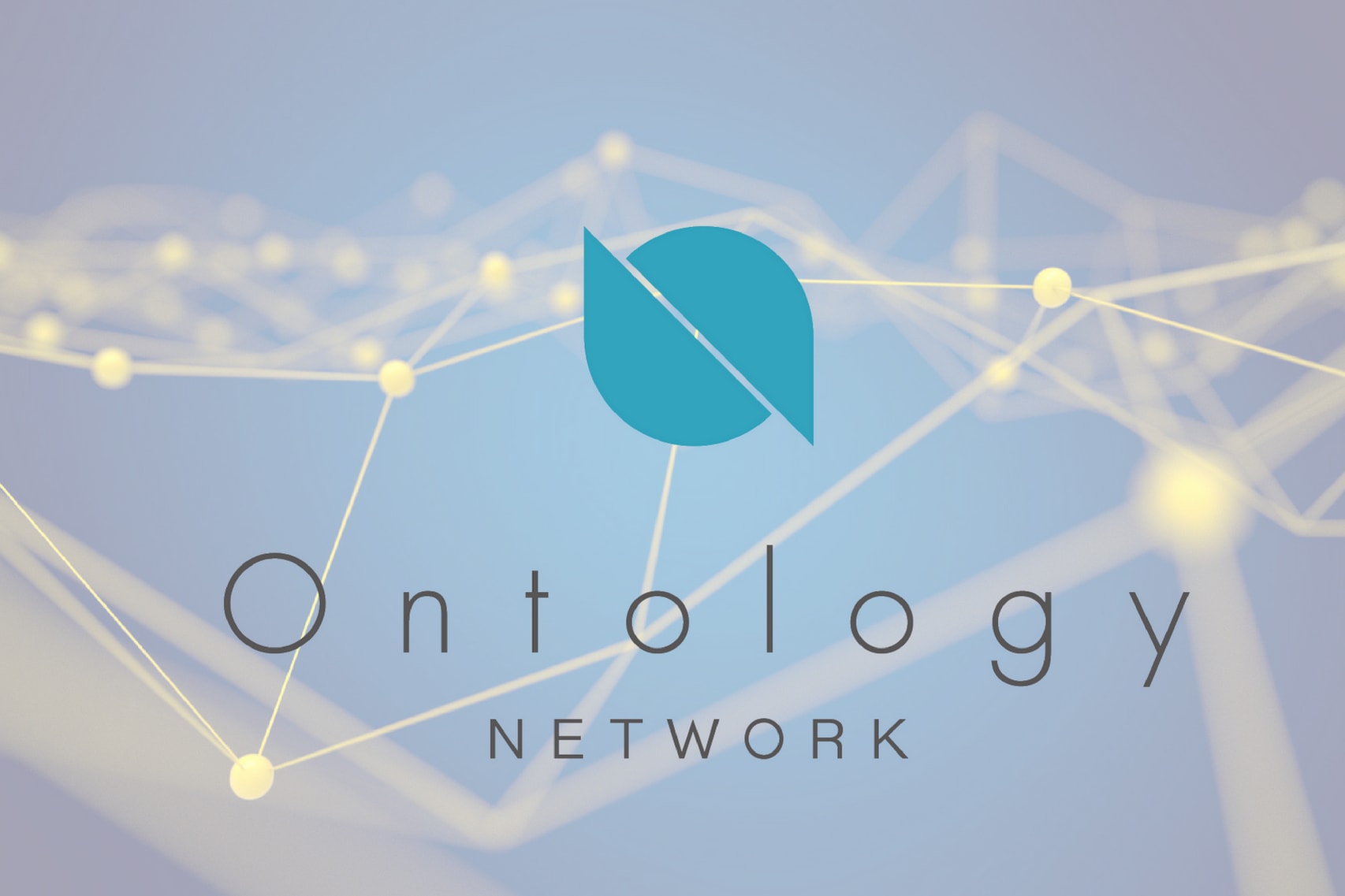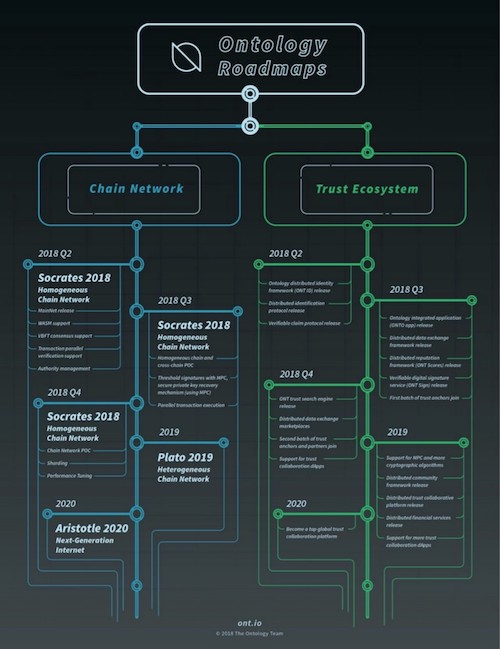In order to increase our social scalability as a species, we need peer-to-peer (P2P) solutions to establish trust globally. Ontology and projects like it play an important role by creating a trust layer, allowing businesses and governments to participate in the new smart economy.
The company behind NEO and Ontology (Onchain) is attempting to connect all businesses, governments, and end users on the blockchain with their Distributed Network Architecture (DNA) framework. If they are successful, the DNA framework could become an industry standard for blockchain interoperability.
This vision is supported by both the Chinese government and many of China’s major enterprises. If realized, Ontology and the NEO ecosystem will become some of the most dominant players in smart contract/dapp space.
A previous article predicted NEO would become the #2 market cap by 2020. Ontology plays a large role in whether that prediction pans out.
The Ontology token (ONT) first started trading in March 2018 around $1.30, according to Coinmarketcap.com. At the time of writing, ONT is trading for around $6, which is roughly a 600% increase over a 3-month period.
We selected Ontology as one of our top 5 projects to watch in June, due to its mainnet launch which is scheduled for June 30. So far, it has continued to show steady progression with support from strong industry players, most recently Huobi Pro, who announced that they will support Ontology’s token swap. Here, we take a more detailed look at the network and why it inspires such confidence.
Project Overview
Ontology is a new high-performance public multi-chain designed to be a distributed trust collaboration platform. Ontology is part of the NEO ecosystem but is scheduled to launch its own blockchain in June 2018.
In order to really understand Ontology, we must understand the vision of the parent company, Onchain.
Ontology is being created and supported by the same company that released NEO: Onchain. Onchain is a private, VC-backed company, founded by CEO Da HongFei and CTO Erik Zhang in response to the attention that private companies gave to the development of Antshares, which later rebranded to NEO.
Onchain’s biggest contribution is the development of an open standard, called the Onchain Distributed Network Architecture (DNA). This standard allows for modular construction of public, private, and consortium blockchains that are fully interoperable.
When you look at the NEO ecosystem at a high level, it’s very impressive to see the pieces of the “smart economy” coming together.
What Ontology Is Trying To Solve

The hype around blockchain technology continues to grow, and yet we’re seeing very little adoption from private enterprises and governments. This lack of adoption is partially because the technology is still in its infancy, making it difficult for businesses and governments to jump onboard.
However, more importantly, governments/businesses don’t actually want to put their data on a public blockchain due to security and privacy concerns.This is where Ontology comes in.
Ontology creates an ecosystem of many different types of blockchains that cater to the needs of both governments and businesses. This means we’ll see many different private chains and consortium chains that all connect back to the public blockchain that is Ontology.
Ontology acts like a bridge linking governments, businesses, and individuals to the main hub of the digital economy, NEO.
The Ontology Network

The sheer scope of Ontology is mind-blowing, and the team is starting to release more details to help our understanding.
The main focus of Ontology is to create a peer-to-peer trust network that can be utilized between different systems, industries, applications, devices, and even across different blockchains. This means Ontology is replacing the manual process of establishing trust we use today with a more decentralized, more secure, less corruptible version.
With a trust network established, Ontology enables some really interesting functionalities.
Managing Identity With Ontology
Ontology creates a “multi-source identity verification” system by combining various data sources (TheKEY, NEO ID, government blockchain sources, etc.) to create a high degree of certainty that the digital identity version of Alice is actually Alice. This system also lets Alice manage her own identity and allow certain people/enterprises access to specific parts of her data.
This ID management solution would be really useful to store and provision your healthcare data, banking data, personal data, etc.
Ontology also wants to map assets in the meat space to a digital avatar on the blockchain: think verifiable art, your car, or your house. Each digital asset stores critical information such as who owns it, how well it was taken care of, etc.
Connecting Business and Government to the Smart Economy
Since businesses don’t want their data sitting in a public ledger, they will likely store data on private/consortium chains. Leveraging the interoperability features built into the entire NEO ecosystem allows enterprises using Ontology to participate in the smart economy while keeping sensitive data secure.
How Does Ontology Achieve Consensus?
Ontology uses a brand new consensus mechanism called VBFT, which is very similar to NEO’s Delegated Byzantine Fault Tolerance (DBFT) algorithm. Ontology claims they’ve improved DBFT by adding in a mechanism to randomize the consensus nodes, which theoretically reduces attack vectors.
Super Nodes (Triones)
Similar to NEO, Ontology will use super nodes, which they call “Triones.” Each supernode must acquire hardware and pay ongoing infrastructure costs to support the network with storage, bandwidth, etc. Each supernode must stake ONT tokens to qualify.
For the first 3 years, Ontology will receive 1% inflation in the form of ONG to pay the supernodes. This acts as an insurance policy to ensure a security through incentivizing the supernode ecosystem. After that, Ontology will decide how to proceed to keep incentives aligned.
The candidates of the Triones consensus node group will include communities, professional organizations, and technology enthusiasts from across the world. They will constitute Ontology ecosystem co-builders, together helping develop Ontology’s trust ecosystem.
Decentralization Through the “Triones Incentive Curve Equation”
Ontology is attempting to create a “sweet spot” for node incentives, which should theoretically prevent centralization of miners/nodes. This means the incentives for staking (paid in ONG) start to decrease after hitting a certain size stake.
Ontology Reserves a Lot of Power
Ontology (like NEO) is opting to keep training wheels on the network, at least in the beginning. In other words, they will maintain strong centralized control while maintaining transparency to their community.
On one hand, this makes sense, as the more centralized you are the faster you can change/grow, which is useful. On the other hand, too much centralization gets us right back to where we started, and maybe even worse. However, maintaining centralized power is China’s way, so we’ll have to take it or leave it.
ONT Token Model
The Ontology network uses a 2-token system, just like NEO.
- ONT is used for governance and staking
- ONG is used to pay for blockchain services (smart contracts, storage, bandwidth, etc.)
Each ONT token will generate ONG (like NEO/GAS), but the token economics have not been released yet.
Interestingly, there was no ICO for ONT. Instead, they decided to airdrop ONT tokens to the community through various channels. DevCon attendees received 500 ONT each, Ontology newsletter subscribers gained 1,000 each, and the NEO council airdropped .2 ONT for each 1 NEO held.
The maximum supply of ONT and ONG is 1,000,000,000 each. ONT is indivisible (similar to NEO) and ONG is divisible down to 8 decimal places.
Learn more about the token distribution model here.
Currently, ONT is a NEP-5 token (similar to ERC-20). However, after the Ontology mainnet is released, they will swap over to the native ONT token.
ONT versus NEO: Competition or Symbiosis?
At first glance, many investors may believe that NEO and Ontology are competitors. They’re both Chinese-based platforms that offer smart contracts and dapps with a similar underlying technical architecture.
Upon further examination, it’s clear that NEO and Ontology actually help each other!
Their main difference is in how they are being used. NEO is a public utility enabling the smart economy, with digital users interacting with digital assets. ONT creates a trust system, allowing business/government entities to participate in the NEO smart economy. Ontology greatly improves the use case for NEO by allowing anyone with sensitive data to put this data on a private side chain that can interact with the greater Smart Economy.
In May 2018, the Ontology Council and the NEO Council signed a memorandum of understanding (MOU) describing their joint strategy and technology integrations.
The MOU lays down how ONT and NEO will be working together in 4 key areas:
- Digital identity and data exchange
- Smart contract open standards
- Data integration: standardize there tech interfaces (APIs, SDKs, etc.)
- Cross-chain research to become fully interoperable
Also, both NEO and ONT will be sharing resources in 2 key areas. First, they’re creating a joint task force to work on projects that benefit both parties, and second, both groups are contributing funds to mutually beneficial research initiatives.
This article does a good job at further explaining the symbiosis between NEO and Ontology.
Roadmap
The Ontology team just announced the first version of their roadmap. The big takeaway is this project is extremely ambitious, and it will be many years before its full potential is realized.
Mainnet is scheduled to be released in Q2 2018, meaning by June 30, 2018. You can track their progress of the mainnet launch (Socrates) in their Github. At the time of writing, they’re 87% complete with the Mainnet.
Team

Ontology is led by founder Jun Li, who has spent the majority of his career at Infosys and China’s Financial Futures exchange. Li then went out to co-found Onchain along with NEO’s Da Hongfei.
Andy Ji, Ontology’s Chief Strategy Officer, served as the Secretary-General of China’s Ministry of Industry and Information Technology, as well as a Director of Hyperledger. Having direct connections to the government is helpful in China, and will no doubt be beneficial to Ontology in the future.
Not only is Ontology’s team very large (60+ core team members), but it’s also backed by Onchain and the NEO community at large.
With an ambitious project like this, it’s good to see a team that is both highly capable and highly capitalized.
Risks, Challenges, and Competitors
While we at Invest in Blockchain are quite optimistic on the Ontology project over the long term, it’s important to bring up any concerns.
First of all, Ontology’s fate is intimately connected to that of the NEO ecosystem.
Without NEO, Ontology is pretty much useless. If you’re bullish on the NEO ecosystem then this is a non-issue. However, if you don’t think the NEO ecosystem will succeed, then you should stay away from ONT.
Based on the fact that the Chinese government and big business have invested heavily in NEO, it seems unlikely that the entire project will fail. China typically creates homegrown monopolies to dominate on Chinese soil. From the outside looking in, it appears NEO and Ontology are the golden children of the Chinese blockchain strategy.
Will Companies Actually Adopt Ontology?
All this work will go to waste if for some reason enterprises/governments don’t use Ontology. There are many blockchain projects (Stratis, Nuls, Neblio, etc) seeking to create private/sidechain/consortium chains for private businesses.
If we peek behind the curtain, it appears so, as the Onchain team has been implementing private/consortium chains to enterprise customers for several years. Most notably:
- Enterprise Digital Asset Platform for Everbright Securities
- Identity Chain for the Guiyang Government
- Electronic Data Attestation offering called “Legal Chain”
- Equity Crowdfunding Platform for China Clearing
Ontology Is Testing Out a New Consensus Protocol
Experimenting with new consensus protocols is stepping into the unknown. While Ontology has learned from the success/failures of both Onchain and the entire NEO ecosystem, nothing has been proven at scale.
How To Buy and Store ONT
ONT is being traded on many exchanges, with most of the volume coming from: Binance (38%), OKEx (23%), and Huobi (16%). Keep in mind, these tokens are simply placeholders before the mainnet release. Keep an eye out for how the Ontology team and exchanges will be handling the transition.
Storing ONT
Currently, ONT is an NEP-5 token, which means it can be stored anywhere that supports NEO assets (Neon Wallet, Ledger, etc.).
Soon after the Mainnet release (June 30), they will release an ONT Mainnet wallet. The team says this soon-to-be-released wallet is where you will need to store your ONT in order to receive the free ONG dividends. We still don’t know the rate at which ONG will be accrued to ONT holders.
Final Thoughts: Can Ontology Pull It Off? Is This a Black Mirror Episode in the Making?
This is a philosophical argument: what tradeoffs are you willing to allow when it comes to decentralization? Both NEO and ONT are very centralized at this point and claim they will decentralize later.
On one hand, this is a smart strategy in the early days, as centralized entities are more effective at making decisions and moving quickly. However, there is a real risk that NEO and ONT will never actually give up control. NEO has started to include more nodes, but they’re all still vetted by the NEO council. And when it comes right down to it, have we ever witnessed a central authority willingly giving up control?
What happens if the Chinese government links their social credit system into the NEO/ONT ecosystem and then decides to overtake the system on grounds of national security? Imagine all users’ digital identities, personal data, and digital assets secured to biometric data, all being run by one of the most advanced surveillance states the human race as ever seen.
Does this mean it’s a bad investment? Probably not, but it certainly sounds like it could take a dystopian turn if left unchecked.
What do you think about Ontology? Do they have what it takes to fulfil their lofty goals?
Will NEO/ONT give up control in the future? Is it paranoid to raise questions about the dystopian potential for abuse?
We’d love to hear your thoughts in the comments below.
Disclaimer: Author owns a small amount of ONT from the NEO airdrop. This is not financial advice. As always, DYOR and make your own financial decisions.
Related: Here’s What Ontology Has Accomplished In The Past Month &; And It’s A Lot


